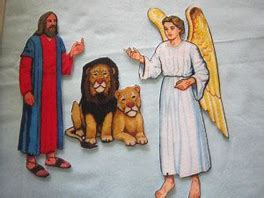
Years ago, before whiteboards and digital screens, Sunday school teachers used a labor intensive visual aid called – The Flannel Graph.
Flannel graph is little more than a large piece of plywood or hardboard covered in a pastel colored flannel cloth. Cut out figures of Bible characters, mountain scenery and arching palms would magically cling to the flannel board, adding one dimensional realism to Solomon’s Temple, the tablets of stone and the tomb of Jesus. This was the stuff of learning when I was a kid in the 50’s.
 All my earliest Sunday school teachers were women.
All my earliest Sunday school teachers were women.
I continue to hold those godly ladies in high regard; proficient in storytelling. Earthy ladies in one piece dresses and high heels; able to maintain a modest yet feminine posture while clinging for dear life to a low, miniature wooden chair. I can see them hunkered down, their legs gracefully swept to the side, their dress carefully arranged to flow modestly over silken hosed ankles. Speaking quietly through determined smiles; they arranged and rearranged flannel graph cut outs—telling stories of supernatural wonder and totally capturing the imagination of this third grade ruffian.
I’m told there were a few men who taught children’s Sunday school back then but I never saw a man below the sanctuary until Junior High. That’s when they called in the big guns. Brave men who crawled off their Massey Fergusons scrubbed up and wedged into ill-fitting suits to act only slightly more interested in the Sunday school lesson than us boys. No flannel graph for these men! Their lessons were a joint, first time reading from dog-eared Sunday school quarterlies with titles like: “Bible Stories for Junior High Boys.” But it wasn’t about the lesson. I was most impressed that a real man, a man like my dad would take time to talk to a pimply-faced dude.
Truth be told—I don’t remember the lessons, but I remember the teachers. I remember men like Kenny Stoltz and Carl Miller and Wayne Williams–real men who impressed me, not by their teaching acumen or their careful preparation, but impressed that they’d take us on as youngsters. They became my flannel graph. The women flowed through the lessons, but not the men…they were bulldozers in a flowerbed. Even at 12 and 13, I realized they were outside their comfort zone on my behalf. We attended a tiny country church. I knew these men; I knew their families. I knew they farmed, worked in factories and drove milk trucks. And I responded well to their narrow-eyed stares and stern rebukes. I loved the ladies who graced our grade school classrooms, but I revered the men who held court over the chaos that is Junior High.
Today, in churches, we properly work very hard to provide user friendly class rooms…to create stimulating environments. And I smile to myself.
I know this is a “When I was a kid!” statement but…when I was a kid; my Junior High Sunday school classroom was the church furnace room. It was lit by a single hanging incandescent bulb that dangled from a pull string fixture. The ceiling, laced by a web of furnace ducts made it impossible to stand upright. A single folding table was encircled by wooden folding chairs with a faded stenciling on each back that read; “Thomas’ Funeral Home”.
It was in this environment, led by kind but gruff men and gracious women that I made life altering commitments to my Savior. Commitments so personally profound it’s impossible to write of it today through dry eyes.
There’s a straightforward verse in the obscure book of Titus which reads: “And you yourself must be an example to them by doing good works of every kind. Let everything you do reflect the integrity and seriousness of your teaching.” (Titus 2:7)
I can only speak for myself, but it wasn’t the condition of the classroom or the teaching aides that drew me in; it was the teacher. I’ve heard it said, “It isn’t what’s taught but what’s caught that matters most”. Thank you for Lord for contagious teachers. -RG
